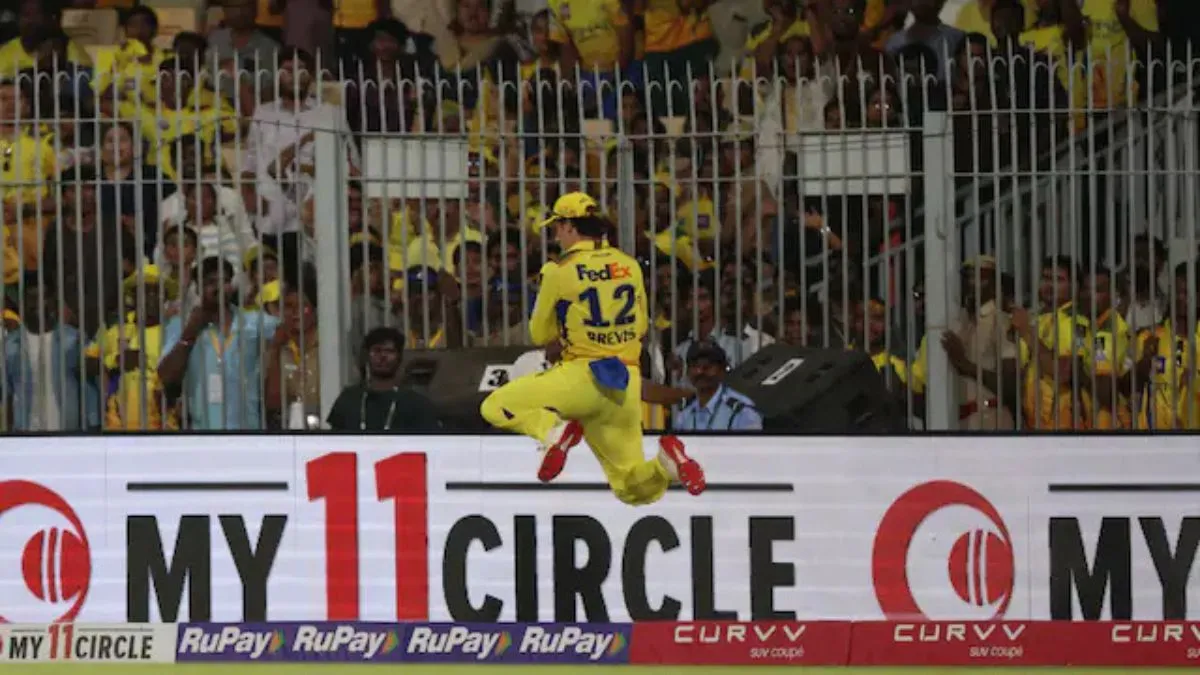- By Namrata Vijay
- Sat, 14 Jun 2025 10:52 AM (IST)
- Source:JND
The Marylebone Cricket Club (MCC) and the ICC are all set to make a few changes in their rule book, regarding the famous 'bunny hop' catches- where fielders are seen jumping and then catching the ball, even though they are standing outside the boundary and this won't be allowed anymore as per ESPNCricinfo.
It should be noted here that these stunning catches, where the fielders are seen pushing the ball inside the boundary and then trying to step out to control their momentum and then dive to take the catch again are still allowed. But if the palm touches the ball in the air while standing outside the boundary rope and is still landing outside would be considered illegal. And if the fielder is coming outside of the boundary and jumps to catch a ball, then they must land inside the boundary so that the catch becomes legal.
To explain it in simpler terms, the catch that Harleen Deol took below is still allowed:
A fantastic piece of fielding
— England Cricket (@englandcricket) July 9, 2021
We finish our innings on 177/7
Scorecard & Videos: https://t.co/oG3JwmemFp#ENGvIND pic.twitter.com/62hFjTsULJ
But the catch that Michal Nesser took during the 2023 BBL match isn't allowed anymore:
Outrageous catch from Michael Neser
— 7Cricket (@7Cricket) January 1, 2023
Allow Glenn Maxwell to explain why it's a legit catch #BBL12 pic.twitter.com/7YORTIUFat
The stunning catch that Dewald Brevis took while representing Chennai Super Kings during their IPL 2025 match against Punjab Kings would come under the second category.
This new law will be implemented from October next year but it will become a part of ICC's rulebook from next week itself.
According to the old law, only those catches were disallowed when the fielder had touched the ball and the ground together while standing outside the boundary. According to the above report, the MCC reckoned that this resulted in, “some unusual-looking catches that, to the majority of the cricketing public, feel unfair".
“MCC has devised a new wording where the ‘bunny hop’ wholly beyond the boundary is removed, but these catches where the fielder pushes the ball up from inside the boundary, steps outside, and then dives back in to catch the ball, are permitted," the report released by the MCC said.
“Our solution has been to limit any fielder who has gone outside the boundary to touching the ball while airborne only once, and then, having done so, to be wholly grounded within the boundary for the rest of the duration of that delivery. Even if the ball is parried – to another fielder or inside the field of play – if the fielder lands outside the boundary, or subsequently steps outside, then a boundary will be scored. For clarity, that means the fielder gets one chance, and one chance only, to touch the ball having jumped from outside the boundary. After that point, the boundary becomes a hard line – and any time they touch the ground in that delivery, whatever else happens, they must be inside" the report added.
The exact iteration of the new catching law
19.5.2 A fielder who hasn't touched the ground is seen as grounded beyond the boundary lines and if they come into contact with the ball first, then their last contact with the ground wasn't entirely inside the boundary ropes. This rule is applicable to any fielder who has touched the ball after it is being bowled by the bowler and it doesn't if any other fielder had touched the ball earlier or not.
19.5.2.1 And if the fielder's touch with the ball doesn't abide by the 19.5.2 the fielder will have to jump outside the boundary line to touch the ball. And once they have made contact with the ball while being in the air, then all the other touches by that fielder on the ground would be considered dead. If there is any other contact with the ground by standing outside the boundary rope when that ball is being bowled, and whether that fielder touches the ball, then it would lead to a four being scored.
19.5.2.2 And if the ball is thrown back to the field and whether that fielder touches the ground or has jumped outside the boundary, then that fielder must land and stay inside the boundary, till that bowl is declared dead. Otherwise, it would be considered a four or a six.
